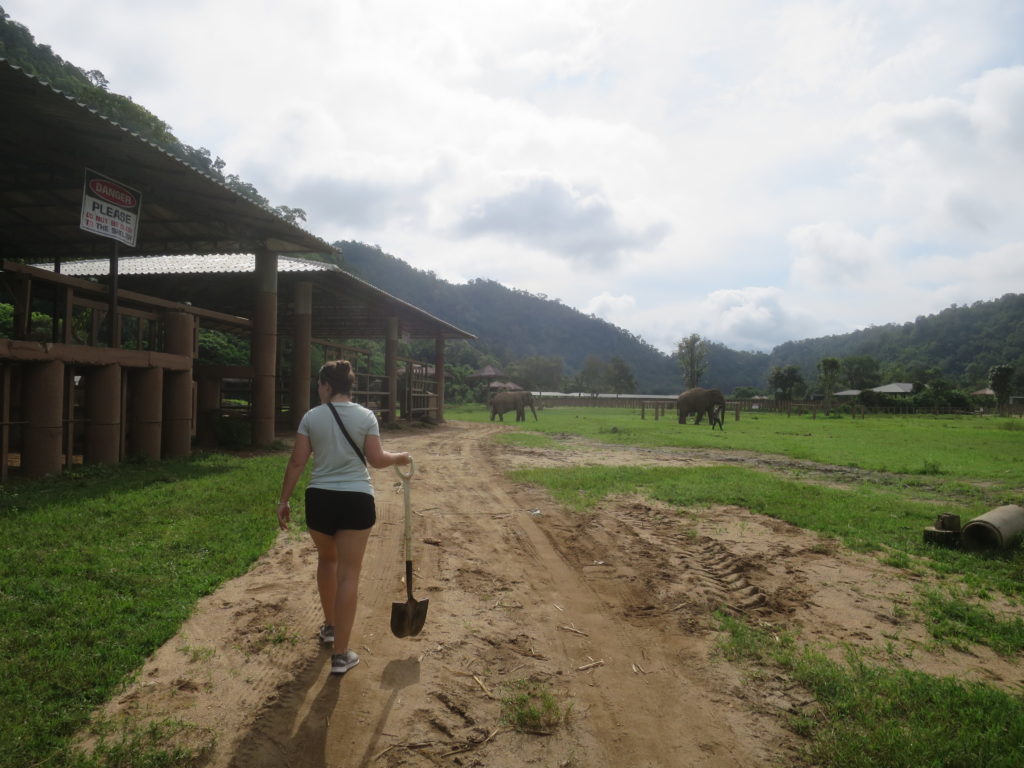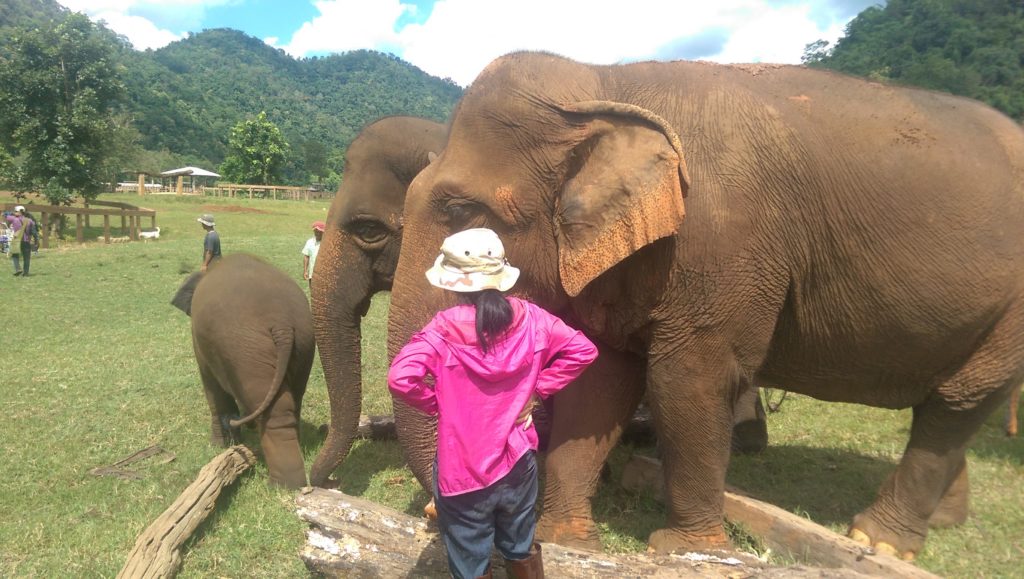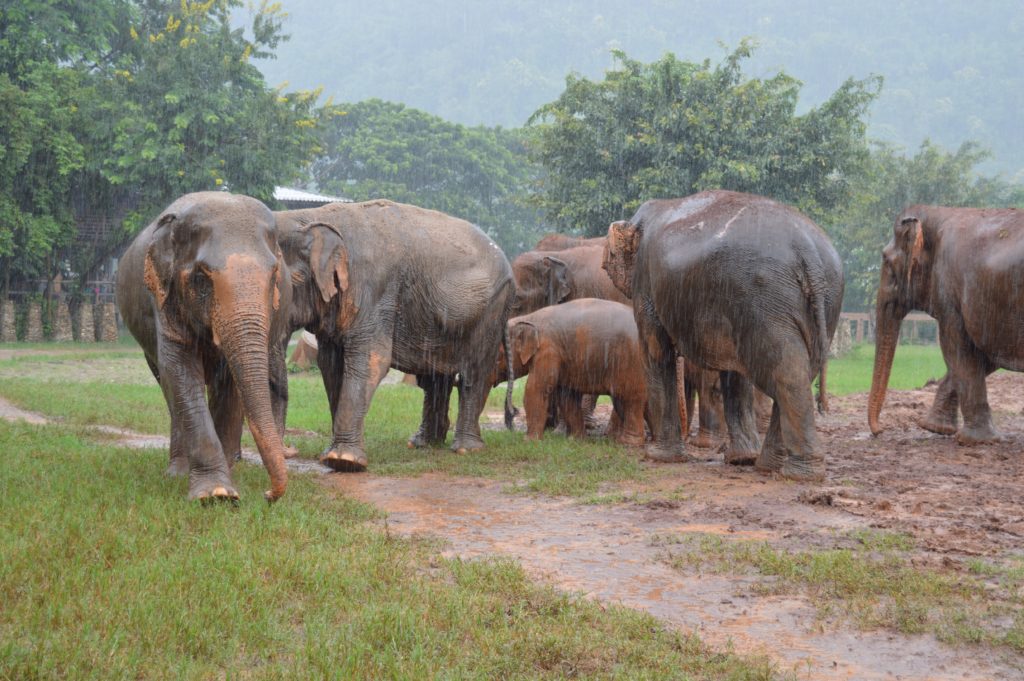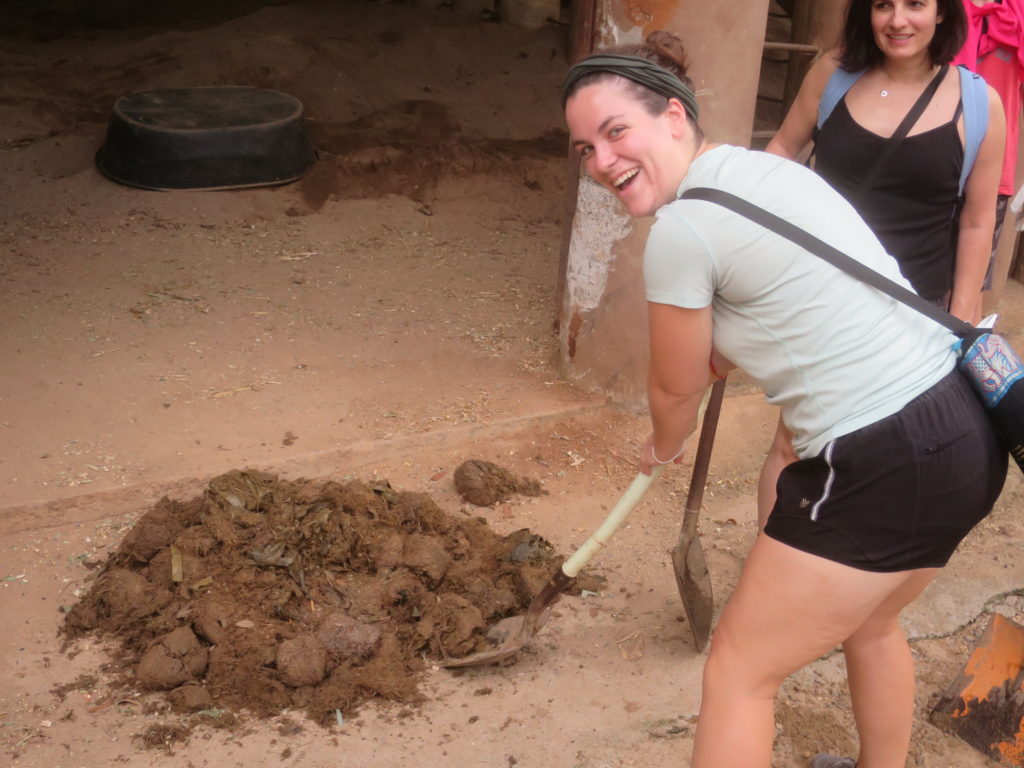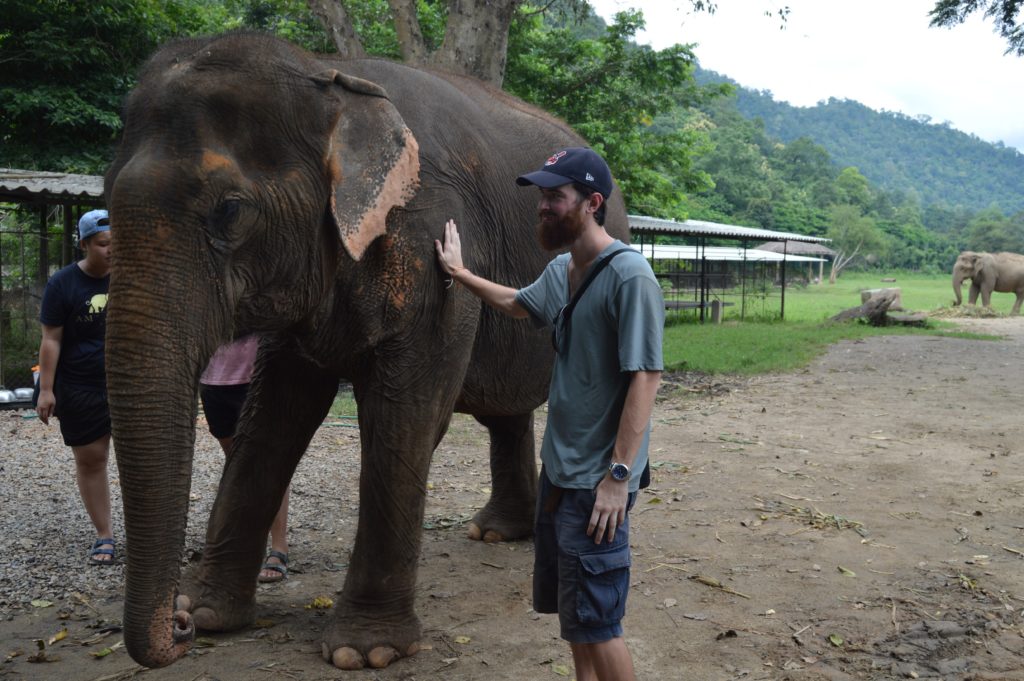Volunteering at Elephant Nature Park
There’s elephants in Thailand everywhere you look. They’re adorning statues outside temples, tattooed on both tourists and locals, and of course decorating the seemingly endless sea of stretchy elephant pants favored by every girl that’s ever been to Thailand. You’ll also, unfortunately, see elephants in poor conditions used to entertain tourists by giving rides, painting pictures, performing in slapdash circuses, and even babies forced to pose for pictures in busy city streets. We knew we wanted to volunteer with elephants while we were in Thailand, but finding a volunteer opportunity with the elephants’ interests at the forefront rather than the tourists’ enjoyment was at the top of our list of requirements. We ended up at Elephant Nature Park near Chiang Mai, and I’m happy to say it lived up to our hopes and more.
We opted for a one-week volunteering program, although they do day trips and overnights as well for people that don’t have as much time. The program we chose is their most popular, so we had to book well in advance (back in May). Early Monday morning we hopped into one of their transport vans and drove to the park, about an hour and a half outside of the city. The first thing that struck me was the size; the park itself is around 250 acres, including facilities and stables for the elephants, a large set of dorms and rooms for the volunteers, an area for the more than 500 rescued dogs, and a large deck area where we took meals, fed tasty fruit to the elephants, and spent a lot of time relaxing and reading in our downtime.
On the first day we arrived at the park, we got a depressing glimpse into the inhumane training ritual practiced to tame wild baby elephants. After being forcefully separated from their herd and mother, the babies undergo a practice called the phajaan, where they are restrained to the point that they can barely move and receive a series of beatings to mentally break them. Once their spirit is broken, they can be trained to perform for tourists, who never see the cruelty behind the scenes. Seeing these videos, which the founder Lek took herself, put into perspective what a lot of the elephants in the park have gone through and why some of them have scars, both physical and mental, to this day.
Lek herself is quite an inspiring figure. She started rescuing elephants before she even had the park, living in the forest and growing her own food to feed them. Eventually, she received a parcel of land as a donation from a visiting American businessman who was sympathetic to her cause. She has grown the park from there, increasing the capacity and improving the quality of the facilities for the elephants thanks to the donations and support of volunteers. Despite the altruistic nature of her endeavor, she has received a significant amount of pushback from both the Thai government and the surrounding elephant parks, many of which still offer riding and shows. Neither the government nor the other parks are willing to sacrifice any portion of their tourist revenue, and so view her as a disruptive force. Not one to be dissuaded, Lek has managed to grow the park substantially and is currently looking to purchase more land to further expand her efforts.
The elephants in the park, many of whom have been rescued from 60 or more years of servitude, are at last allowed to taste the life of a wild elephant. They form herds and families, and some even choose “best friends” that they spend all their time with, which I thought was adorable. Elephants are extremely emotional creatures, and form bonds and friendships very similar to our own. In one case, both heartwarming and heartbreaking, a new baby had been rescued, but had already been separated from its mother. In the wild, the babies are cared for very closely for years after birth, well into adolescence, so there were concerns about how well the baby would do growing up. However, one of the older female elephants in the herd took a quick liking to the new baby and started caring for it. It turns out, that female had had five babies over the course of its life, all of which were removed from her shortly after birth (which is common in an industry where babies are valued for training purposes). As a result, she was desperate for a baby of her own that she could actually care for and raise, and so “adopted” the new calf. Though both had tragic origins, they are today living happily as a family at the park, never to be separated again.
For our part, we took on a variety of duties assisting with the care of the elephants, some of which involved direct interaction with the elephants and some of which did not. Since they’re taking untrained volunteers, we were relegated to the menial grunt work, though it was still really cool to see some of the behind-the-scenes work that goes into caring for 75 elephants. One of the tasks was working in the “elephant kitchen”, where the food is prepared. Elephants eat up to 300 pounds of food per day, which is about 10% of their body weight. Elephant Nature Park has 75 elephants. That means that every day, over seven elephants’ weight worth of food had to be prepared. That is a LOT of food. We spent those mornings unloading trucks of food, shucking corn, peeling bananas, and washing watermelons. The sheer quantity of food in the kitchen, and the fact that they received literal truckloads of food every day, was staggering to see.
All that food has to go somewhere. Another common duty (heh) was shoveling the elephant poo out of their pens. This wasn’t quite as bad as it sounds; it’s similar to manure so there wasn’t much of a stench. The difficulty came from the volume that these guys churn out! We routinely filled up three or four tractor trailers to be hauled away, so it was a very physical task. We also cleared brush, cleaned the park, and weeded. Some of the tasks were little more than excuses to get up close and personal with the elephants, like feeding the elephants, bathing them, or just walking around the park hearing stories of their origins. Whatever your task, as you wander the park you can see these guys everywhere you look meandering around. No pens or fences, just you and them hanging out in the same area.
The accommodations were pretty basic. We had a small room with a bed, mosquito net (which is very necessary), and a single light. Due to the poor infrastructure and influx of rain, the electricity was out around half the week and the WiFi was close to nonexistent. But hey, we were volunteering in the jungle, so our expectations weren’t too high. For me, the hardest part was the food, which was all vegetarian. I get it, it makes sense for the park rescuing animals not to eat animals, but by the end I was hankering for a burger or some fried chicken. The food itself wasn’t bad, there were actually some tasty potato and pasta dishes, but there wasn’t a whole lot of variety day-to-day, so by the end we were very sick of the same meals. Our first stop back in Chiang Mai was a KFC.
After this week, it was kind of hard going back to Chiang Mai and seeing agencies offering elephant rides, touts advertising circus shows, and elephant paintings for sale. However, there do seem to be positive changes happening in the elephant tourism sector. Many parks you can visit now proudly boast “No Riding” on their advertisements; years ago, that would have been seen as a negative, but as awareness spreads there is a growing demand for more ethical interaction with these gentle giants. And honestly, beyond the ethics of it, seeing the elephants interacting with each other in a natural setting, watching the babies run to catch up to their patient mothers, seeing their playful nature in the mud baths, and growing to understand how deep their emotions run inspired far more awe than riding or seeing one stand on one leg ever could.

